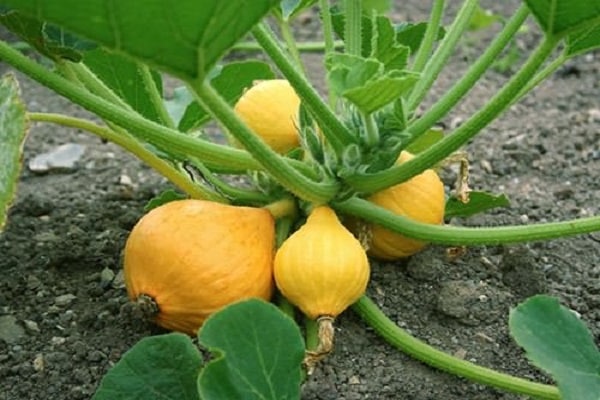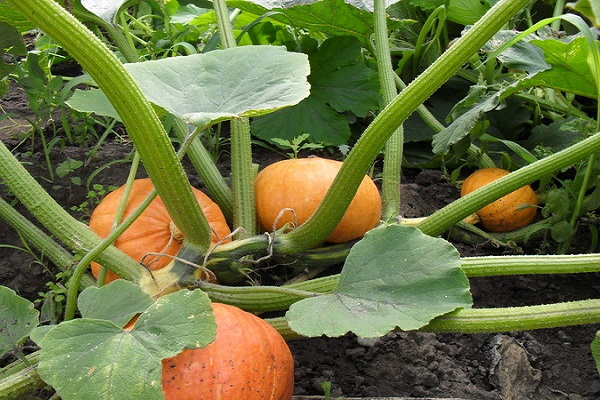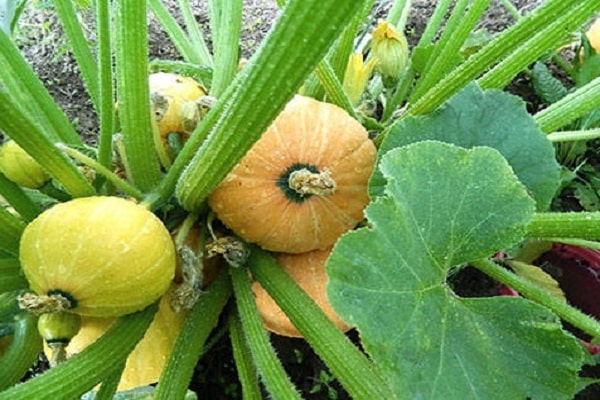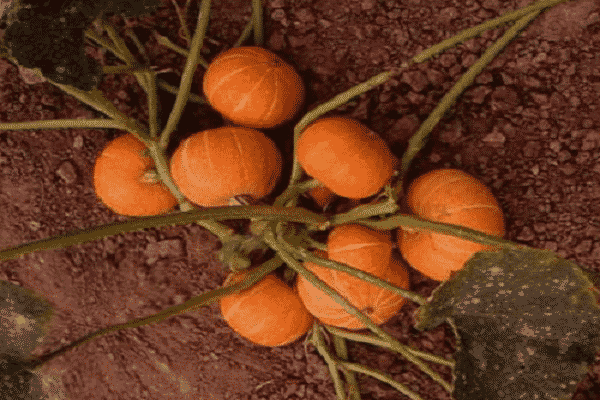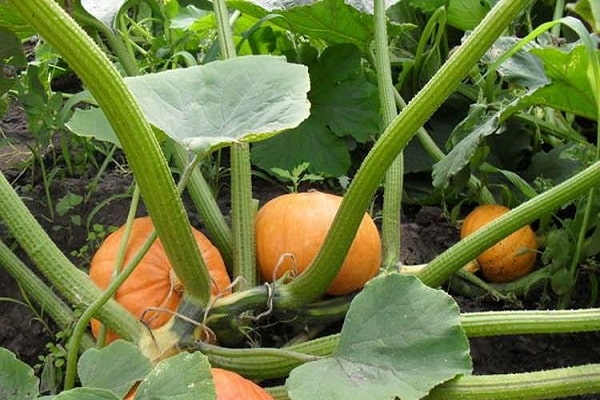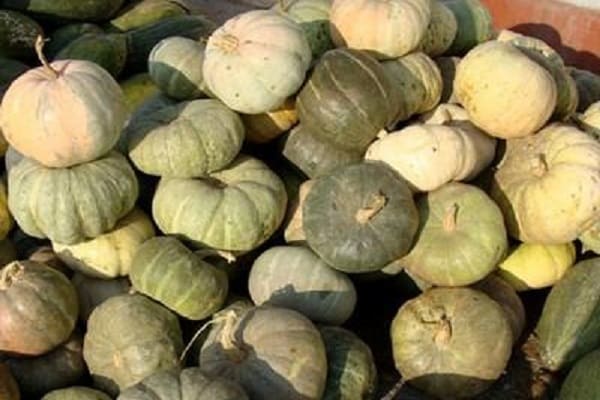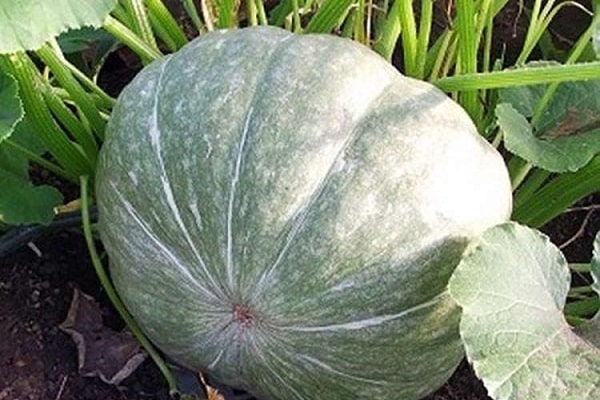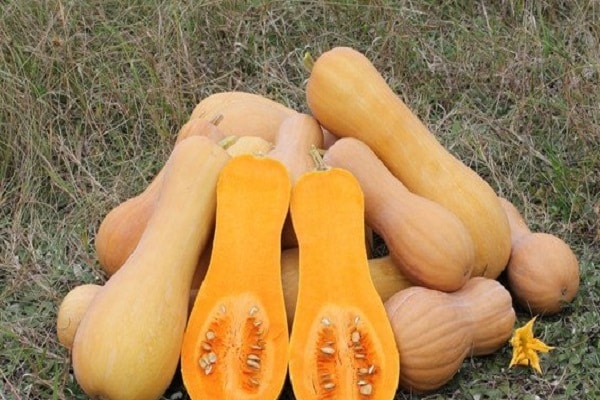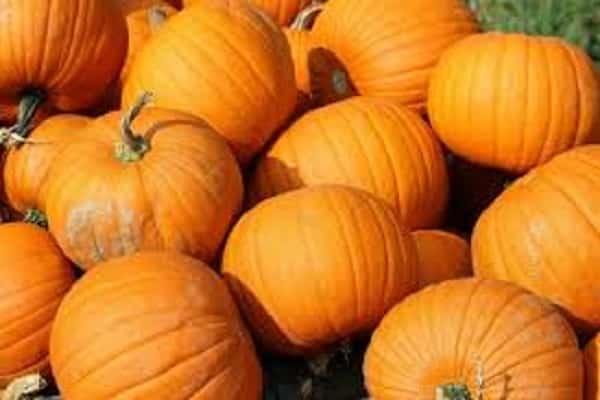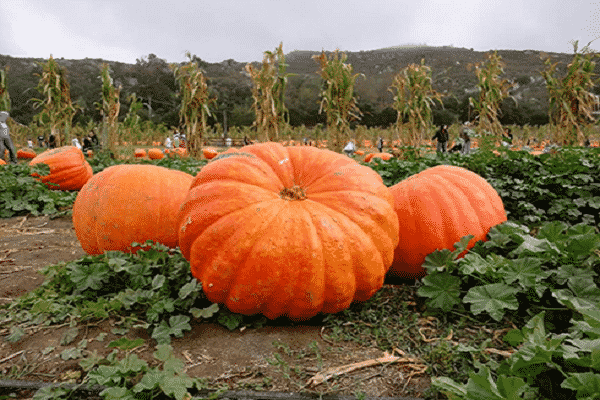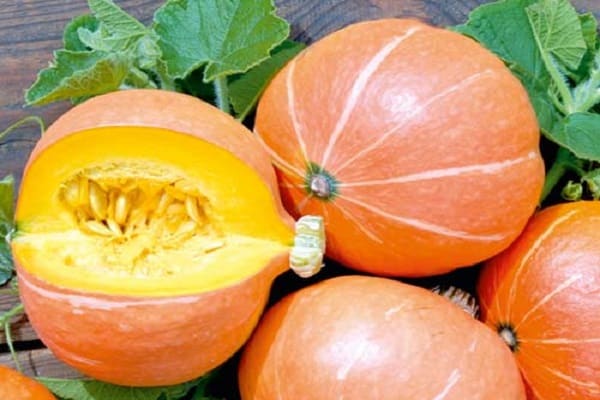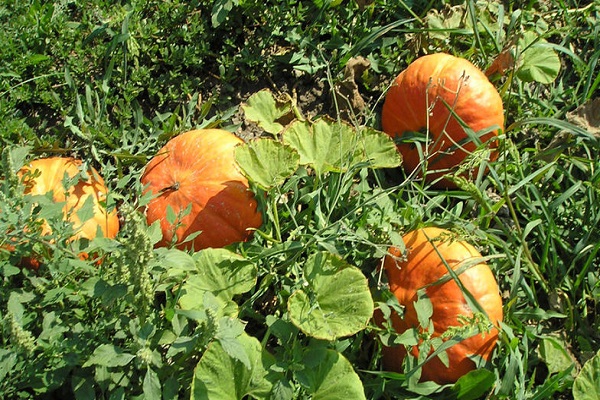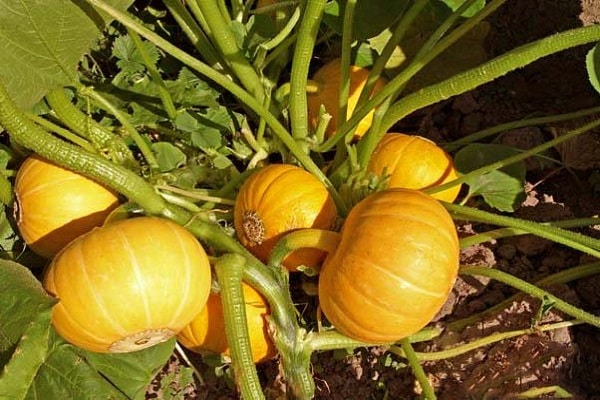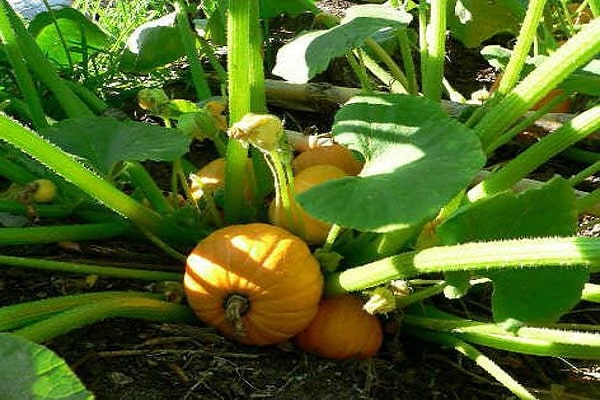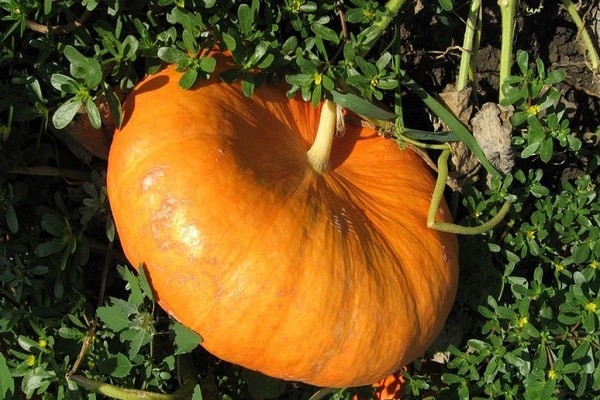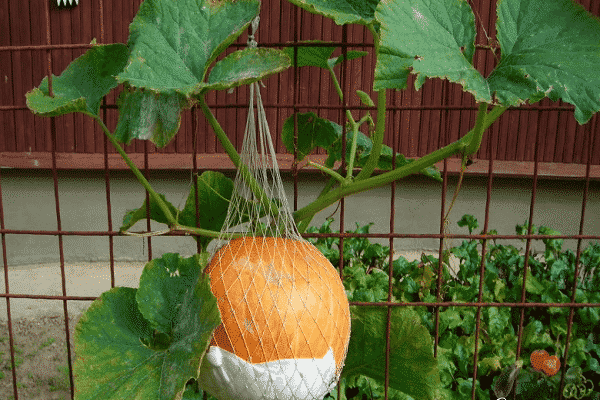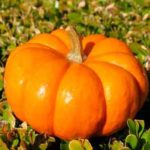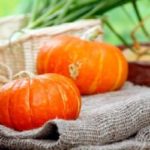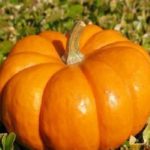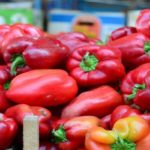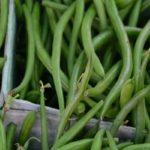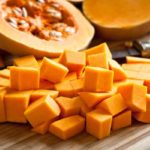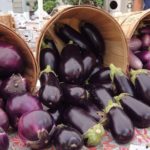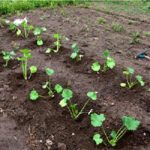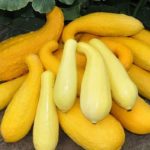The usual idea of a pumpkin is that it has long vines, which, if not pinched in time, spread throughout the garden, and sometimes even try to sneak through a gap in the fence to neighbors. Bush pumpkin differs from climbing pumpkin in its compact bushes and the absence of long shoots. At the same time, productivity does not suffer. All modern bush-type varieties have good characteristics.
Features of bush pumpkin and its benefits
The choice of bush pumpkin varieties is large, each has its own growing characteristics, but there are common points characteristic of the culture of this species. Compact bushes allow you to plant the bush variety in small summer cottages. If desired, it can be planted in the garden, using it as an element of landscape design.
The bushes are decorative at the time of flowering and during fruiting, and the dark green leaves look elegant throughout the season. The stems of the plant are erect, there are no lashes, the fruits are formed at the very base.
Benefits of bush pumpkin:
- no need to form a bush;
- takes up little space;
- dense foliage protects the soil from drying out;
- productivity.
The main advantage of the bush species - precocity - is worth talking about separately. Each variety has its own ripening period, but on average they all reach biological ripeness in 85–100 days. At the same time, the fruits have excellent taste and aroma. In most varieties, the pulp is bright orange and contains a large percentage of carotene and other useful microelements.
Review and characteristics of the most popular varieties of bush pumpkin
Gardeners are in no hurry to plant pumpkin seeds in open ground, waiting for the soil to warm up well. There is time to choose the most successful variety, or rather, varieties. To do this, you need to analyze all the main characteristics of culture:
- ripening time;
- fruit shape and size;
- taste and thickness of the pulp;
- keeping quality;
- transportability;
- productivity.
Smile
Description of the Smile pumpkin consists of only advantages, which is why many summer residents choose this particular variety. The Smile variety has the following main characteristics:
- yield (280 c/ha);
- cold resistance;
- early maturity (85 days).
They are ideal for our short summer with unstable weather.By the end of summer, low, compact bushes have time to ripen portioned fruits (up to 7 pieces per bush) weighing from 800 g to 1200 g.
The fruits are spherical, slightly flattened, the surface is smooth or slightly segmented. The pulp is bright orange, sweet, not juicy, and medium in thickness. The peel is orange, with subtle white stripes visible on it. There are few seeds in the fruits. Advantages: drought-resistant, transportable, long-lasting, produces good yields even with a lack of heat, good taste, can be grown throughout the Russian Federation.
Medical
Bush pumpkin, an early-ripening variety. The plant has a table purpose; it forms flattened, slightly segmented fruits, covered with a light gray peel with a dark gray net-like pattern. The bark is easy to cut, the flesh when cut is bright orange and of medium thickness. Taste characteristics of the pulp:
- crispy;
- with a high juice content;
- tender;
- tasty;
- juicy.
The main advantages of medicinal pumpkin: productivity — 42.1 t/ha, long-term storage, transportability. There is a drawback - weak immunity. The plant requires prevention:
- powdery mildew;
- anthracnose;
- rot (gray, white).
Grow pumpkin The Medicinal variety is available in the central zone of the Russian Federation in the Urals and Siberia.
Pearl
Pearl is a butternut squash variety. You can get a rich harvest in a short time. Growing the Pearl bush pumpkin lasts about 100 days. It is not difficult to grow large fruits weighing up to 7 kg. Each bush produces 6 shoots, on each of which one ovary is left. The shape of the fruit is cylindrical, length 50 cm.
The peel is orange with a slight bluish tint. During storage, the taste of the dark orange pulp becomes more intense. It contains a lot of carbohydrates, vitamins, carotene and microelements.Valuable qualities of the pulp:
- dense;
- crispy;
- sweet;
- juicy.
The variety is valued for its high yield - 504 c/ha, drought resistance, and excellent taste.
Bush orange
Orange pumpkin can be stored almost until the New Year, although the variety is early ripening. The first fruits ripen 95–100 days after germination. Orange bush pumpkin is successfully grown in Siberia; it is not afraid of sudden changes in weather. In April, by planting seedlings of orange bush pumpkin under covering material, after 3 months an early harvest of round fruits weighing up to 5 kg is obtained. Planting and caring for it are standard:
- moderate watering;
- weeding;
- loosening or mulching between rows.
The pulp and skin are orange, the sugar content is low, so this variety is used for making pureed soups, stews, winter preparations and freezing.
hundred pound
Fruit ripening occurs on average within 112–138 days from the time of emergence. Ripe pumpkin fruits are orange and weigh less than 40 kg. There is a slight discrepancy between the name and the actual weight of the fruit; small pumpkins weigh 10 kg, large ones - 20 kg. This has little effect on the popularity of the variety; it only grows every year.
Fruits can be of different shapes (spherical, oval) with weight depending on weather conditions and soil fertility. Their pulp is very juicy, it is used for making porridges, purees, and eaten fresh. This variety develops and bears fruit better if the weather is moderately warm.
Amazon
It doesn’t take long to wait for the fruits to ripen; they reach technical ripeness 90 days after emergence. Amazon bushes are compact. The fruits have a beautiful, flat shape with a weight of 1 to 2 kg. The color of the peel and pulp is dark orange.The taste of the fruits is high, their pulp is very juicy, crispy, and sweet.
Advantages of the variety:
- marketable condition;
- excellent taste;
- well stored;
- ripens early.
Gribovskaya
One of the old bush varieties of pumpkin Gribovskaya 189, it should not be confused with another wonderful winter pumpkin Gribovskaya. The bush variety is popular among Siberian and Ural summer residents. The shape of the fruits resembles zucchini; they are oblong, narrowed at one end. Fruit weight is 3–5 kg; you can get up to 8 kg per square meter.
As the pumpkin develops, the color of its skin changes. In young pumpkins it is green with dark stripes, in ripe ones it is orange with the same green stripes. The pulp is orange, very dense and tasty. In terms of ripening time, the variety is early, the fruits ripen 80 days after germination. Picked green, they ripen during storage.
Pumpkin diseases avoid winter pumpkin Gribovskaya. This variety loves warmth and produces spherical gray fruits weighing up to 4 kg. They can be stored throughout the winter. The thickness (5 cm) and bright orange color of the pulp are amazing. Its taste and nutritional content are excellent. The pulp of Gribovskaya winter contains both vitamin C and a large amount of carotene.
The yield of the Gribovskaya winter variety is 24.1 t/ha. In terms of ripening time, the variety is late-ripening - at least 140 days pass from germination to harvesting.
Rouge Vif Detamp
It is not difficult to grow this exotic crop in a summer cottage. The variety of French selection has found its fans among Russian summer residents. Rouge Vif Detamp is one of the ten popular bush pumpkin varieties. It is not difficult to grow, the bushes are not tall, and the fruits are large, weighing up to 10 kg.
The peel is pink-red, the flesh is light orange, juicy, moderately sweet, and makes excellent juice. The fruits are not stored for long; the deadline is mid-December. Many summer residents praise this variety for its productivity, but criticize it for its average taste and aroma.
Caring for Bush Pumpkin
There are no special features for growing bush pumpkin. Planting and caring for this variety is not much different from caring for climbing pumpkins. The only important difference is the method of forming the bushes. When choosing a location, take into account sufficient illumination of the area and the absence of drafts.
If necessary, deoxidize the soil by adding chalk or dolomite flour. Sand and peat are added to loamy and clayey soil to improve its structure. The root system develops better in loose, permeable soils. Fertility is increased by adding:
- compost;
- humus;
- mineral fertilizers (superphosphate, potassium nitrate).
There are two ways to plant pumpkins: seeds in the ground, or seedlings. The age of seedlings ready for planting in open ground is 25 days. In open ground, seeds are sown in well-warmed soil. Landing dates:
- middle zone of the Russian Federation - mid-May;
- Ural, Siberia - end of May, beginning of June.
The main guideline for landing is the current weather forecast. Pumpkin loves warmth and there is no need to rush into planting if there is a threat of return frosts. When planting early, the pumpkin is protected from frost by covering material. The standard planting scheme for bush varieties of pumpkin is 60x60 cm.
Bush squash likes to be watered regularly with warm water. It tolerates short-term drought without much damage, but long-term drought can significantly reduce the pumpkin yield. The sprinkling method is not suitable for this crop.When watering, you do not need to water the leaves, fruits and flowers. All water should fall into the hole formed around the central shoot.
Pumpkin responds well to feeding. You shouldn’t get carried away with them; it’s enough to feed it with nitrogen fertilizer in the initial period, when the green mass is actively growing, and with phosphorus-potassium preparations during fruit formation.
Bushes usually do not form, but after setting the first fruit, the crown of the main shoot is pinched. If there are a large number of leaves, some are removed so that the fruits receive more sunlight. In August (10th–15th) all growing points are pinched. This must be done so that all the set fruits have time to ripen before the onset of cold weather.
The readiness of the fruit for harvesting is judged by the stalk and color of the peel. The stalk dries, and the peel acquires a color corresponding to the given variety. If frosts are expected on the soil, all fruits are removed; frozen pumpkins are poorly stored. If possible, harvesting is carried out in dry and sunny weather. Fruits collected in the rain are dried under a canopy for several days.

